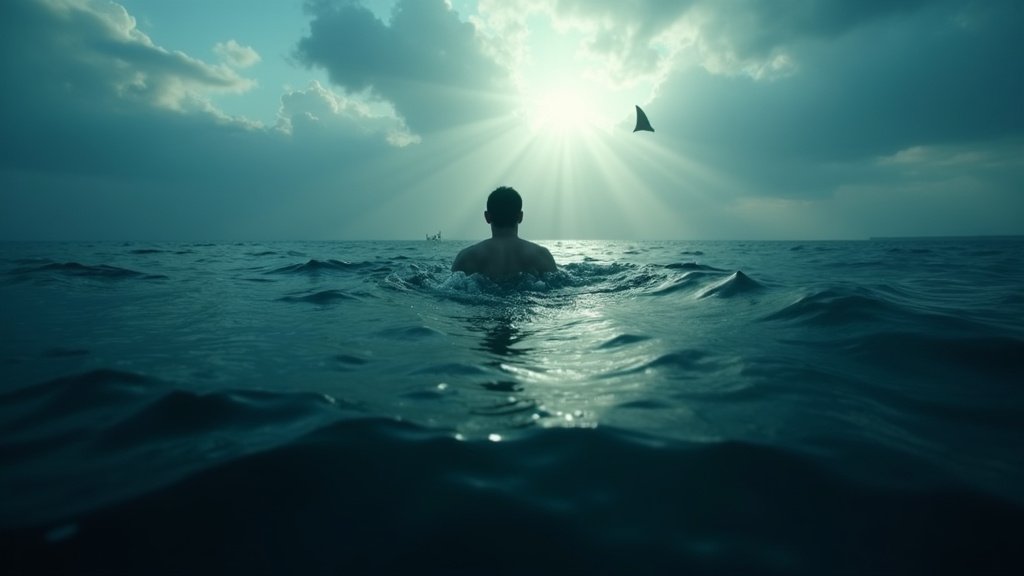Fifty Years On, ‘Jaws’ Still Echoes: Are US Beaches Truly Safe for Swimmers?
It has been half a century since Steven Spielberg’s iconic film “Jaws” first terrified audiences and forever altered our perception of the ocean. Released in 1975, the cinematic masterpiece, set on the fictional Amity Island, depicted a community grappling with the horrific aftermath of a shark attack and the subsequent efforts to protect swimmers. Yet, fifty years later, this opinion piece reflects on the enduring legacy of the film and the persistent question it raises: are US beaches, despite technological advancements and a deeper understanding of marine life, truly safe for swimming? The sobering answer, as highlighted in reflections from the Miami Herald, suggests that the ocean, a place of recreation and wonder for millions, continues to present inherent dangers, making beaches potentially unsafe environments for those who venture into its depths.
The Lingering Shadow of the Megalodon
The visceral terror evoked by “Jaws” was, in large part, due to its portrayal of an unseen, predatory force lurking beneath the surface. While the film’s antagonist was a fictionalized great white shark of improbable size and aggression, it tapped into a primal fear of the unknown that resides in the vast expanse of the ocean. This fear, amplified by the film’s gripping narrative and unforgettable score, has left an indelible mark on the public consciousness. Fifty years on, the image of a fin cutting through the water or the chilling implication of what lies beneath continues to resonate. This enduring cultural impact means that for many, the simple act of swimming in the ocean is colored by the specter of shark encounters.
Beyond Sharks: A Multifaceted Threat
While shark encounters are perhaps the most sensationalized danger associated with ocean swimming, they represent only one facet of the risks involved. The ocean is a dynamic and powerful environment, capable of presenting a variety of hazards to unsuspecting swimmers. Rip currents, for instance, are a constant and often underestimated threat. These powerful channels of water can quickly pull even strong swimmers away from the shore, leading to exhaustion and drowning. The very nature of waves, while inviting for surfers and playful children, can also pose a risk, particularly during stormy weather or in areas with strong undertows. Furthermore, swimmers can encounter jellyfish stings, encounters with other marine life, or suffer from the effects of sun exposure and dehydration.
Beaches: A Precarious Balance of Allure and Risk
Beaches are undeniably alluring. They represent a gateway to relaxation, adventure, and a connection with nature. Millions of Americans flock to coastal areas each year, seeking respite from the everyday and embracing the therapeutic qualities of sun, sand, and surf. However, this widespread appeal often masks the inherent risks. The editorial perspective from the Miami Herald underscores the reality that despite increased surveillance, safety measures, and public awareness campaigns, the fundamental nature of the ocean remains unchanged. It is a wild and unpredictable territory. The allure of the water can sometimes lead to a false sense of security, where the potential dangers are downplayed or ignored in favor of the pleasure of the experience. This disconnect between perception and reality is where the true challenge lies in ensuring beach safety.
Evolving Understanding, Enduring Dangers
In the five decades since “Jaws” premiered, our scientific understanding of marine ecosystems and shark behavior has grown exponentially. Researchers have dedicated countless hours to studying shark populations, migration patterns, and the environmental factors that influence their presence near shore. This increased knowledge has led to improved warning systems, better-informed beach management practices, and a more nuanced public discourse about sharing the ocean with its natural inhabitants. Yet, this advancement in understanding does not negate the fundamental risks. Shark populations, though perhaps better understood, are still present in coastal waters. Incidents, while perhaps statistically rare in the grand scheme of beach attendance, do occur, serving as stark reminders of the ocean’s untamed nature. The news from coastal communities often includes reports of sightings, temporary beach closures, and, in unfortunate instances, encounters that reinforce the notion that beaches are not entirely risk-free zones.
Conclusion: A Call for Vigilance
Fifty years after “Jaws” first captured our collective imagination and fears, the simple truth remains: US beaches, while immensely enjoyable and a vital part of American leisure, are not inherently safe for swimming. The ocean is a complex and powerful force, populated by a diverse array of marine life, some of which can pose a threat to human safety. From the primal fear of shark attacks, immortalized by Hollywood, to the everyday dangers of rip currents and unpredictable weather, the risks are multifaceted. This opinion piece, drawing on reflections from the Miami Herald, serves as a crucial reminder for beachgoers to remain vigilant, informed, and respectful of the environment. While we continue to seek solace and recreation in the waters, acknowledging and preparing for the potential dangers is not an act of fear-mongering, but one of responsible engagement with the natural world. The enduring question posed by “Jaws” fifty years ago is as relevant today as it was then: are we truly as safe as we believe when we step into the ocean’s embrace?





